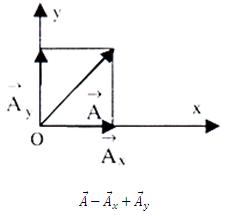Rectangular Components:
Let a force F acting at O. Suppose a system of rectangular co-ordinates x, y and z along with 'O' as the origin. To find out the direction of the force, let us construct a parallelopiped (say, 'box') as illustrtaed in Figure.

If θx, θy and θz are the angles made by F with respect to x, y and z axes respectively, then we obtain:
Fx = F cos θ x,
Fy = F cos θ y, and
Fz = F cos θ z.
The angles θx, θy and θz define the direction of the force F (that acts in space) and cos θx, cos θy and cos θz are called as the direction cosines of the forces that are also (sometimes) represented respectively by l, m and n.
If i¯ , j¯ and k¯ are the unit vectors acting along with x, y and z axes as illustrated in Figure (b), then force F may be expressed in vector form as under :
F¯ = F¯x i¯ + F¯y j¯ + F¯z k¯ and the magnitude of F is given by following

i.e.
F 2 = (Fx) 2 + (Fy) 2 + (Fz )2
∴ 1 = (Fx /F ) + ( Fy /F )+ ( Fz/F)
∴ l 2 + m2 + n2 = 1 ( Because (Fx /F ) = l, ( Fy /F ) = m, ( Fz/F)= n )
a well known result in 3-D geometry.